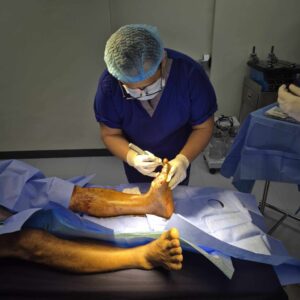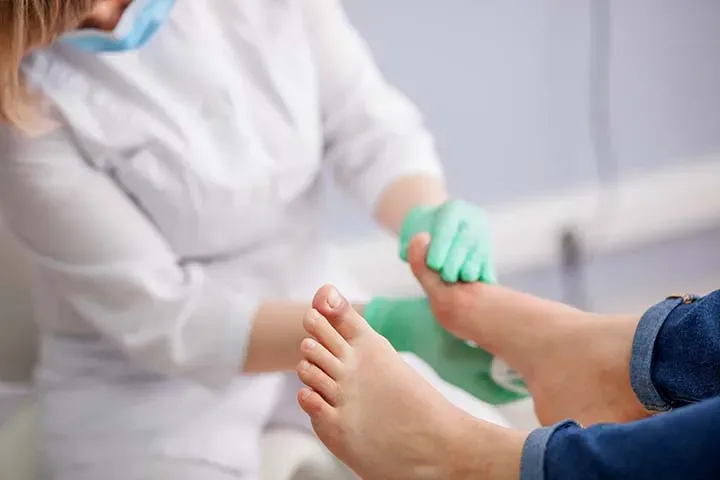Understanding Wound Infection
Wound infection occurs when harmful microorganisms invade the tissue through an open wound, triggering inflammation and delaying the natural healing process. This complication can arise from various causes such as bacteria, fungi, or viruses, with bacteria being the most common culprit. Risk factors include poor hygiene, contaminated wounds, underlying chronic conditions like diabetes, and compromised immune systems. Wounds that are deep, large, or sustained in unclean environments are especially vulnerable to infection. Surgical wounds, traumatic injuries, and chronic wounds such as pressure ulcers all face different levels of risk depending on the patient’s health status and wound care. The infection typically begins with microbial colonization followed by an inflammatory response that may lead to tissue damage. Understanding how infections develop at the wound site is essential for implementing effective infection control and management strategies.
Signs and Symptoms of Wound Infection
Recognizing the signs of infection early can prevent serious complications. Common indicators include redness and swelling around the wound, which are often accompanied by increased warmth and tenderness in the area. Pain may intensify beyond what would be expected for the injury itself. Another key sign is the presence of unusual discharge such as pus, which may be yellow, green, or foul-smelling. Sometimes, the wound edges may separate or fail to close properly. Systemic symptoms like fever, chills, or feeling generally unwell might signal that the infection is spreading beyond the wound. Patients and caregivers should be vigilant about these symptoms and seek medical advice promptly when they appear to ensure timely treatment.
Principles of Effective Wound Infection Control
Controlling infection at the wound site relies heavily on maintaining a clean environment and applying sterile techniques during care. Proper hand hygiene is a fundamental step in preventing contamination, as hands can carry pathogens from one site to another. Using personal protective equipment such as gloves and masks further reduces the risk of introducing bacteria. Wound dressings should be applied with sterile instruments and materials, avoiding any unnecessary contact with non-sterile surfaces. The wound environment itself needs to be kept free from moisture accumulation and debris, which can create breeding grounds for bacteria. Additionally, healthcare providers must be aware of the surrounding environment, including patient hygiene and bed linens, to maintain an infection-free setting. These principles form the backbone of effective wound infection control and management.
Wound Management Strategies to Prevent Infection
Proper wound care involves cleaning the wound thoroughly to remove foreign particles and reduce microbial load. Irrigation with sterile saline is often preferred to avoid irritation from harsh chemicals. Antiseptics may be used selectively, but they must be balanced to avoid damaging healthy tissue. Choosing the right type of dressing is critical, as some dressings contain antimicrobial agents designed to inhibit bacterial growth, while others maintain moisture to promote healing. The frequency of dressing changes should be based on wound type and drainage levels to minimize infection risk. Antibiotic therapy may be necessary, especially when clinical signs of infection are present; however, it’s important to differentiate between topical and systemic use depending on infection severity. Advanced wound therapies, such as negative pressure wound therapy, can aid in managing difficult wounds by promoting blood flow and reducing edema, which helps control infection and accelerate healing.
Monitoring and Assessing Wound Healing Progress
Ongoing evaluation of the wound is vital to ensure that infection is controlled and healing is progressing. Healthcare providers should document changes in wound size, depth, and appearance at every dressing change. Key parameters include measuring the extent of redness, discharge characteristics, and the presence of necrotic tissue. Improvements such as reduced swelling, formation of healthy granulation tissue, and closure of the wound edges indicate positive healing. Conversely, persistent redness, increased drainage, or foul odor may suggest worsening infection. Clear and detailed documentation assists in tracking the wound’s trajectory and deciding when to escalate care. Referrals to wound care specialists or infectious disease experts might be necessary if infections do not respond to standard treatments or if complications develop.
Patient Education and Home Care Practices
Empowering patients with knowledge on proper wound care at home significantly impacts infection control. Patients should be instructed on the importance of hand washing before and after touching the wound or changing dressings. Wound sites should be kept dry and protected from dirt or potential contaminants. Adequate nutrition, especially protein intake and hydration, supports the body’s natural healing mechanisms. Patients should avoid smoking and excessive alcohol use, as these habits impair immune function and delay recovery. It’s also important to educate on signs that indicate worsening infection so patients can promptly report concerns to healthcare providers. Clear, simple instructions tailored to the individual’s needs enhance adherence to wound care protocols and reduce infection risks.
Challenges in Managing Wound Infections
One of the major obstacles in managing wound infections is the increasing prevalence of antibiotic-resistant bacteria, which complicates treatment plans. Chronic wounds, often seen in patients with diabetes or poor circulation, present unique difficulties because of their prolonged healing time and vulnerability to repeated infections. Balancing infection control with promoting tissue repair requires careful selection of wound care products and therapies. Resource limitations can affect access to specialized dressings and treatments, especially in underserved areas. Additionally, patient compliance with wound care instructions can vary, sometimes leading to suboptimal outcomes. Addressing these challenges requires a multifaceted approach combining clinical expertise, patient education, and ongoing monitoring.
Frequently Asked Questions (FAQ)
How can I tell if my wound is infected?
Look for increased redness, swelling, pain, and warmth around the wound. Presence of pus, foul odor, or separation of wound edges are also signs. Systemic symptoms like fever may indicate a more serious infection.
What are the best practices for cleaning a wound?
Use sterile saline or clean water to gently irrigate the wound. Avoid harsh chemicals that can damage tissue. Always wash hands before cleaning or dressing a wound.
When should antibiotics be used for wound infections?
Antibiotics are recommended when there is clear evidence of infection, such as spreading redness or systemic symptoms. A healthcare provider should determine if topical or systemic antibiotics are appropriate.
Can wounds heal without scarring after infection?
Many wounds can heal with minimal scarring if infection is controlled early and proper care is followed. However, deep or severe infections may result in some scarring.
How long does it typically take for an infected wound to heal?
Healing time varies widely depending on wound type, patient health, and infection severity. Minor infections might improve within days, while chronic wounds may take weeks or months to heal.











